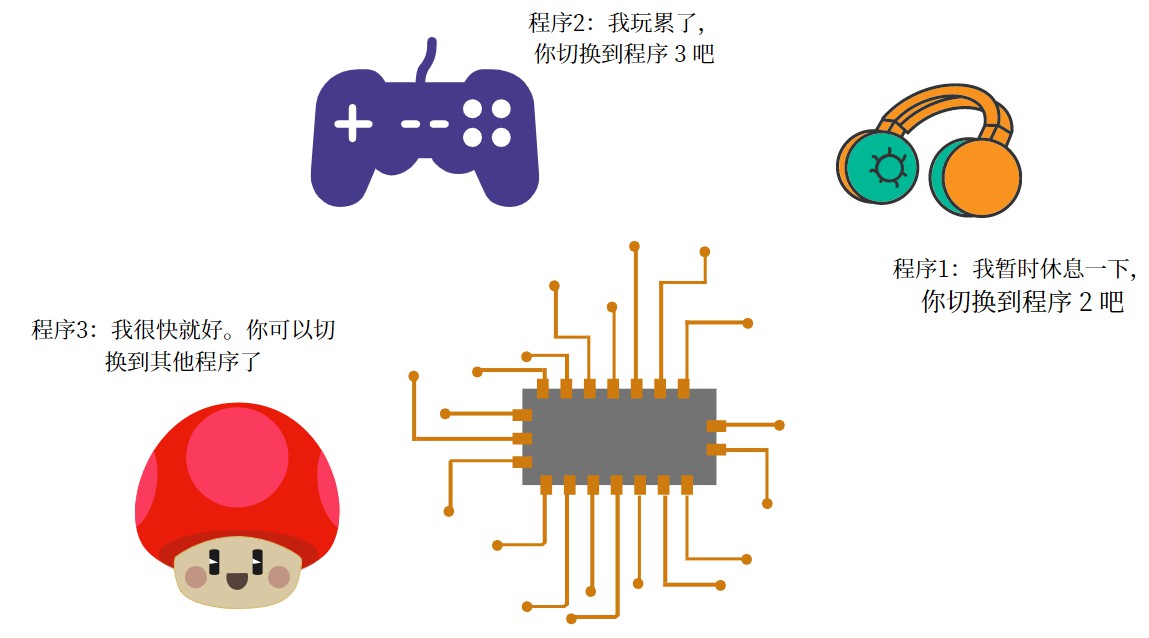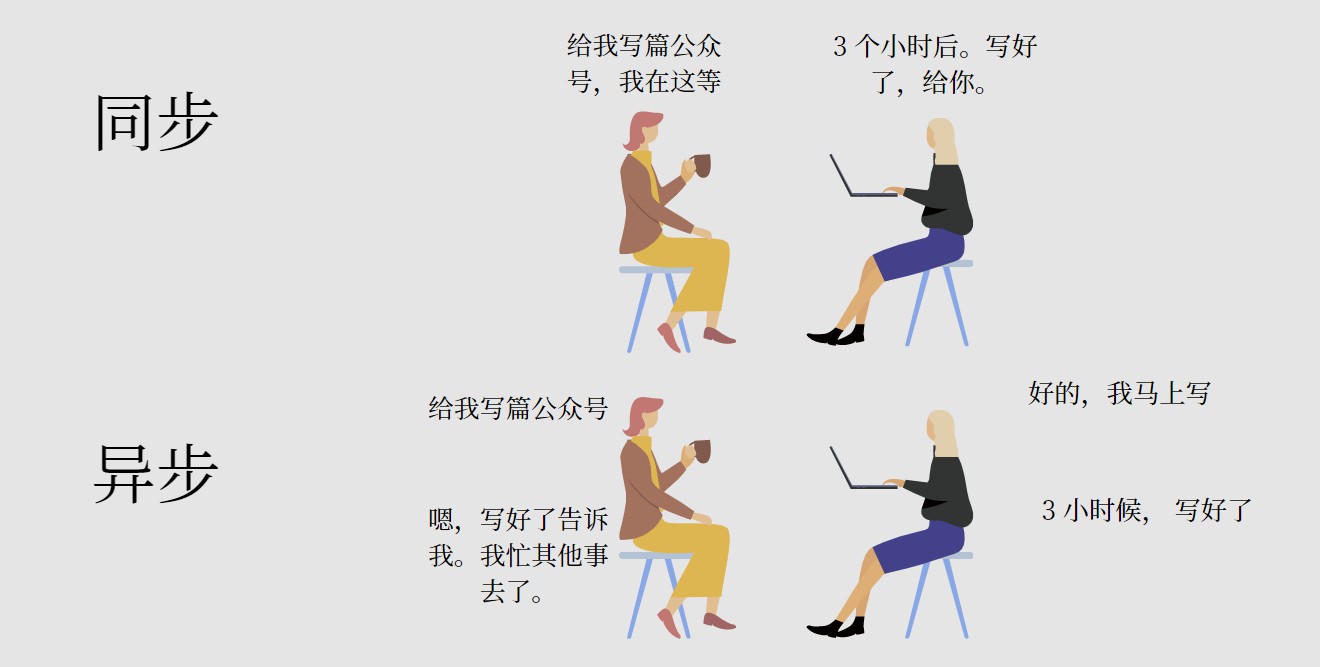python教程:使用 async 和 await 协程进行并发编程
python 一直在进行并发编程的优化, 比较熟知的是使用 thread 模块多线程和 multiprocessing 多进程,后来慢慢引入基于 yield 关键字的协程。 而近几个版本,python 对于协程的写法进行了大幅的优化,很多之前的协程写法不被官方推荐了。如果你之前了解过 python 协程,你应该看看最新的用法。
并发、并行、同步和异步
并发指的是 一个 CPU 同时处理多个程序,但是在同一时间点只会处理其中一个。并发的核心是:程序切换。
但是因为程序切换的速度非常快,1 秒钟内可以完全很多次程序切换,肉眼无法感知。
并行指的是多个 CPU 同时处理多个程序,同一时间点可以处理多个。
同步:执行 IO 操作时,必须等待执行完成才得到返回结果。
异步:执行 IO 操作时,不必等待执行就能得到返回结果。
协程,线程和进程的区别
多进程通常利用的是多核 CPU 的优势,同时执行多个计算任务。每个进程有自己独立的内存管理,所以不同进程之间要进行数据通信比较麻烦。
多线程是在一个 cpu 上创建多个子任务,当某一个子任务休息的时候其他任务接着执行。多线程的控制是由 python 自己控制的。 子线程之间的内存是共享的,并不需要额外的数据通信机制。但是线程存在数据同步问题,所以要有锁机制。
协程的实现是在一个线程内实现的,相当于流水线作业。由于线程切换的消耗比较大,所以对于并发编程,可以优先使用协程。
。。。
这是对比图:
协程的基础使用
这是 python 3.7 里面的基础协程用法,现在这种用法已经基本稳定,不太建议使用之前的语法了。
import asyncio
import time
async def visit_url(url, response_time):
"""访问 url"""
await asyncio.sleep(response_time)
return f"访问{url}, 已得到返回结果"
start_time = time.perf_counter()
task = visit_url('http://wangzhen.com', 2)
asyncio.run(task)
print(f"消耗时间:{time.perf_counter() - start_time}")
- 1, 在普通的函数前面加 async 关键字;
- 2,await 表示在这个地方等待子函数执行完成,再往下执行。(在并发操作中,把程序控制权教给主程序,让他分配其他协程执行。) await 只能在带有 async 关键字的函数中运行。
- 3, asynico.run() 运行程序
- 4, 这个程序消耗时间 2s 左右。
增加协程
再添加一个任务:
task2 = visit_url('http://another.com', 3)
asynicio.run(task2)
这 2 个程序一共消耗 5s 左右的时间。并没有发挥并发编程的优势。如果是并发编程,这个程序只需要消耗 3s,也就是task2的等待时间。要想使用并发编程形式,需要把上面的代码改一下。
import asyncio
import time
async def visit_url(url, response_time):
"""访问 url"""
await asyncio.sleep(response_time)
return f"访问{url}, 已得到返回结果"
async def run_task():
"""收集子任务"""
task = visit_url('http://wangzhen.com', 2)
task_2 = visit_url('http://another', 3)
await asyncio.run(task)
await asyncio.run(task_2)
asyncio.run(run_task())
print(f"消耗时间:{time.perf_counter() - start_time}")
asyncio.gather 会创建 2 个子任务,当出现 await 的时候,程序会在这 2 个子任务之间进行调度。
create_task
创建子任务除了可以用 gather 方法之外,还可以使用 asyncio.create_task 进行创建。
async def run_task():
coro = visit_url('http://wangzhen.com', 2)
coro_2 = visit_url('http://another.com', 3)
task1 = asyncio.create_task(coro)
task2 = asyncio.create_task(coro_2)
await task1
await task2
协程的主要使用场景
协程的主要应用场景是 IO 密集型任务,总结几个常见的使用场景:
- 网络请求,比如爬虫,大量使用 aiohttp
- 文件读取, aiofile
- web 框架, aiohttp, fastapi
- 数据库查询, asyncpg, databases
进一步学习方向(接下来的文章)
- 什么时候用协程,什么时候用多线程,什么时候用多进程
- future 对象
- asyncio 的底层 api
- loop
- trio 第三方库用法
参考文献
作者:九柄
工作:软件测试工程师
领资料或者技术交流务必备注博客园

欢迎点赞和三连。




 浙公网安备 33010602011771号
浙公网安备 33010602011771号